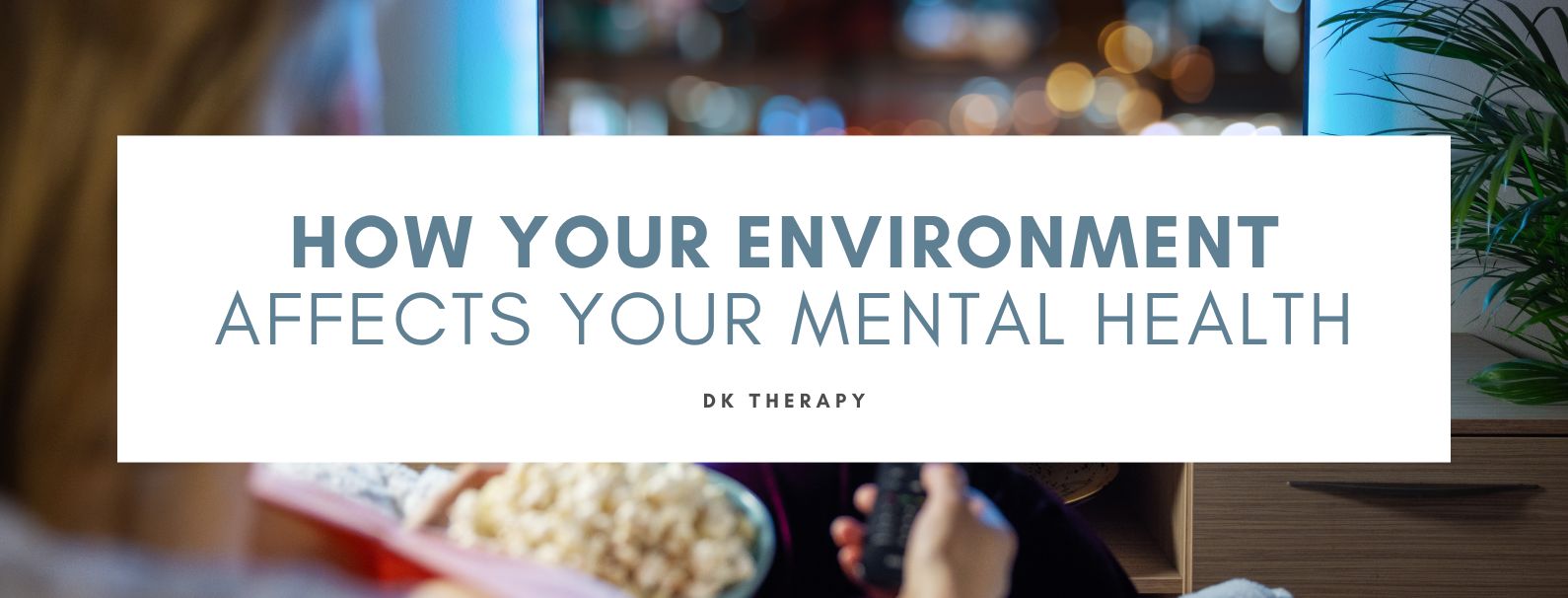
Our surroundings affect our mental health far more than many of us realize. Genetics, lifestyle, and personal experiences shape our mental well-being, but the environment in which we live and work can impact our emotional state as well. Being aware of how your environment affects your mental and emotional stability can make it easier to create spaces that support rest and healing.
The Link Between Environment and Emotions
 Our brains are constantly processing information from the world around us. The spaces we occupy can either calm or agitate us, motivate or overwhelm us. This can be due to anything from physical clutter to the lighting in the area, from the noise level you’re dealing with to the smell of a space.
Our brains are constantly processing information from the world around us. The spaces we occupy can either calm or agitate us, motivate or overwhelm us. This can be due to anything from physical clutter to the lighting in the area, from the noise level you’re dealing with to the smell of a space.
Natural light, for example, is known to boost a person’s mood by increasing serotonin levels. Poor lighting, on the other hand, may contribute to symptoms of depression and fatigue. On top of that, a noisy or chaotic environment can spike stress hormones like cortisol, leading to irritability or trouble focusing.
Clutter and Overstimulation
A cluttered or disorganized environment can worsen internal distress. A messy home can induce stress and make it more difficult to remain organized and functional. Too much visual or physical clutter tends to overstimulate the brain, which makes it incredibly hard to relax or even continue feeling in control.
If your environment feels overwhelming, try starting with small changes. Clear off a table, shelf, or surface. Organize a single drawer or section of the closet. Open the curtains to let more light into a room. Even small adjustments, when added up over time, can restore a bit of clarity to your space.
The Power of Nature
Spending time out in nature can be great for one’s mental health. Walking through a local park, gardening in the backyard, or just keeping plants in your home exposes you to greenery and fresh air. Plus, interacting with plant life may help lower anxiety, ease depressive symptoms, and improve overall mood.
If you live in an urban area, consider bringing nature indoors. Houseplants, nature-inspired artwork, or even a white noise machine that mimics natural sounds can help create that sense of peace you’re looking for.
Social Environment and Relationships
Your mental environment isn’t limited to objects. The people around you also affect your emotional well-being. Supportive, respectful relationships can be a source of comfort, growth, and healing. On the other hand, toxic or unsafe environments can lead to worsened anxiety, feelings of isolation, or even trauma, in some situations.
Setting boundaries and investing in positive relationships is a must for your well-being. Join a group, speak to a therapist, or talk to loved ones you trust. Reaching out to others can help you take charge of your environment and make decisions that keep you safe from overwhelm.
Your Environment as a Sanctuary
Your environment should be a place where you can recharge, especially when you’re stressed. Small details like calming colors, soft textures, soothing scents, and meaningful decor can have a major impact on your sense of inner peace. Developing routines (like a quiet cup of tea in the morning or a technology-free hour before bed) can further support your mental health.
At the end of the day, your space doesn’t have to be perfect. It just needs to feel like somewhere that supports your needs, reflects your identity, and gives you room to breathe. There really is no concrete rules for a mentally healthy environment. What soothes one person might not do the same for another. All you need to do is tune into how your surroundings make YOU feel.
You deserve to feel safe and supported, and creating a nurturing environment is a great way to invest in your mental well-being.
If you’re struggling and you’d like to experience the benefits of therapy, reach out to DK Therapy and schedule an appointment with our office.




